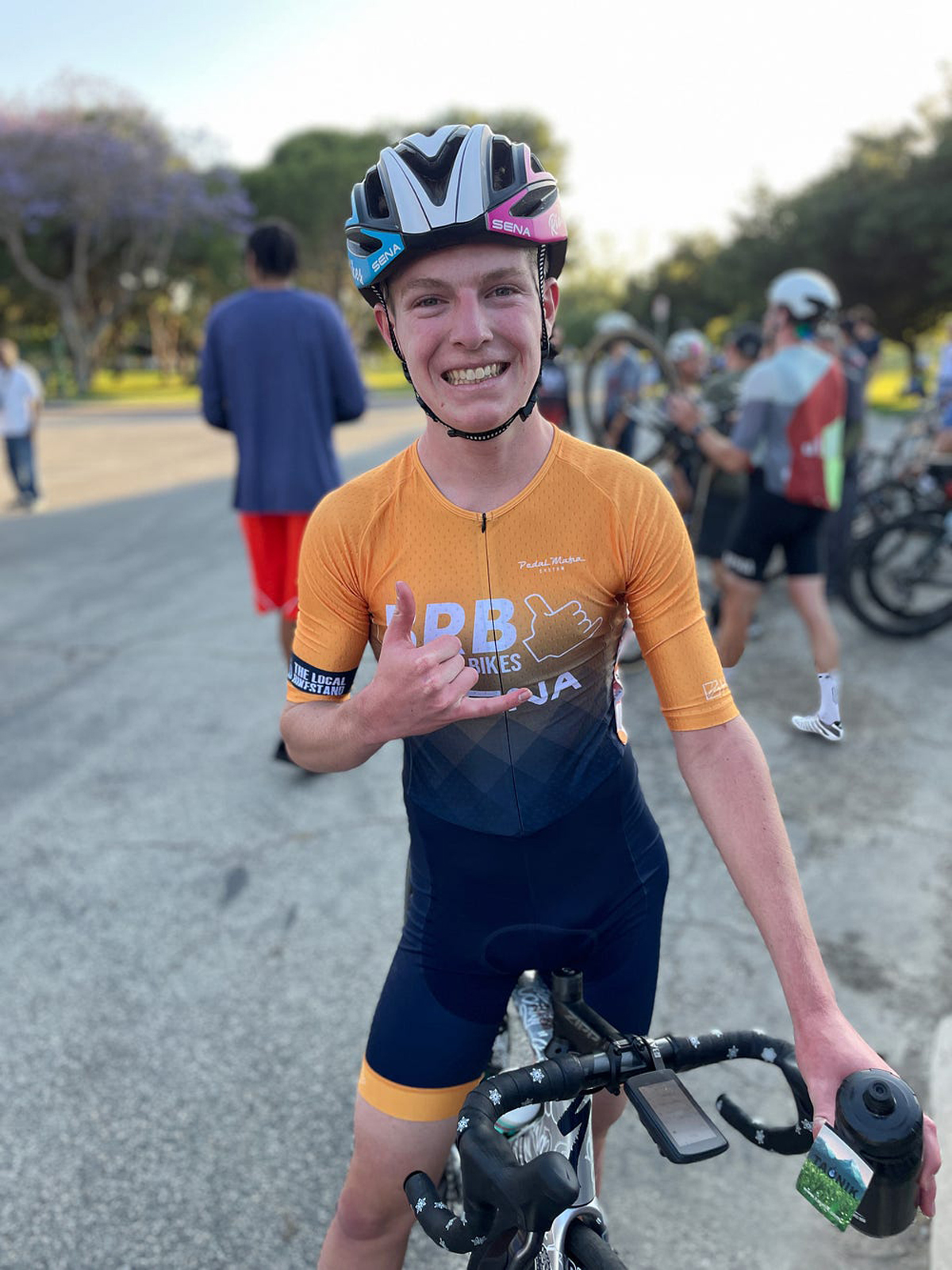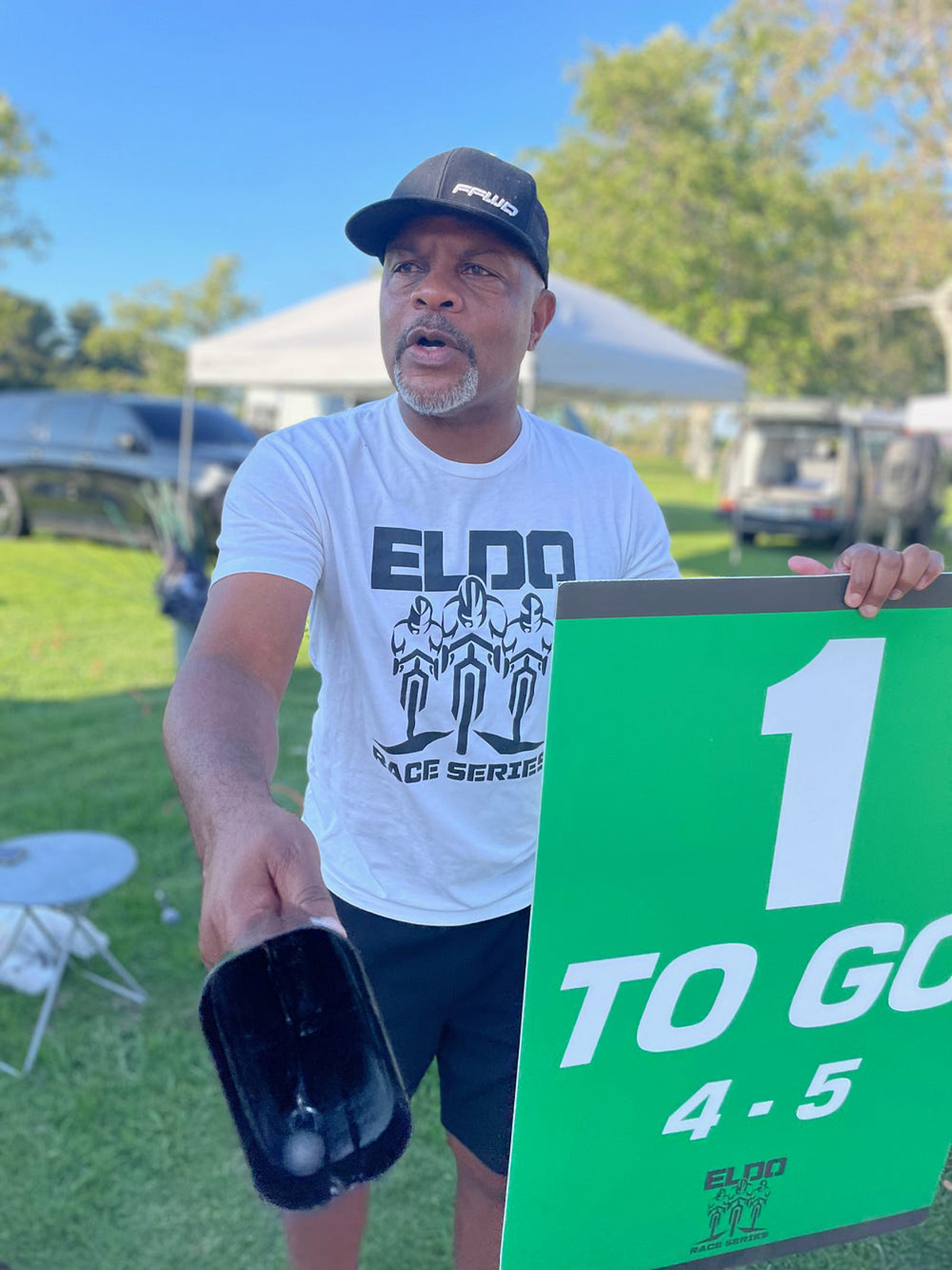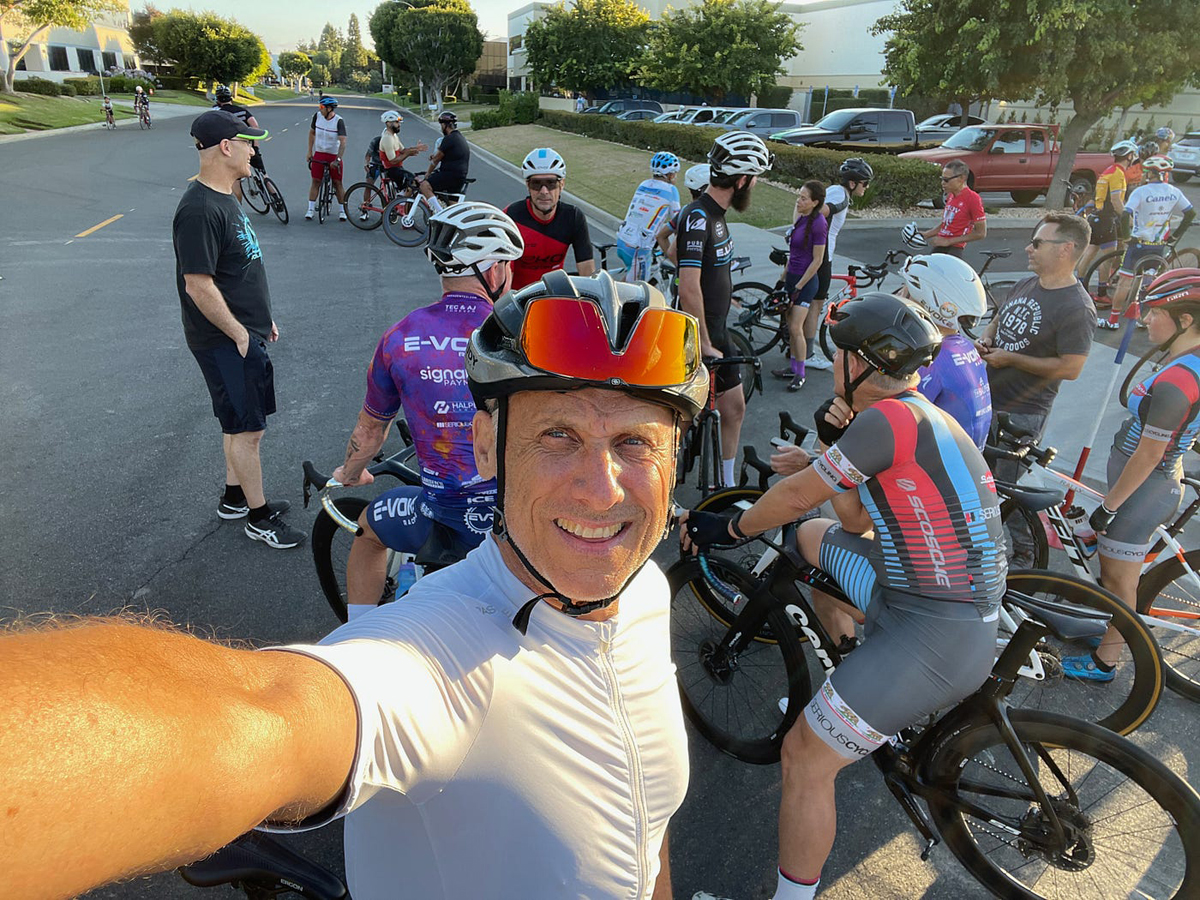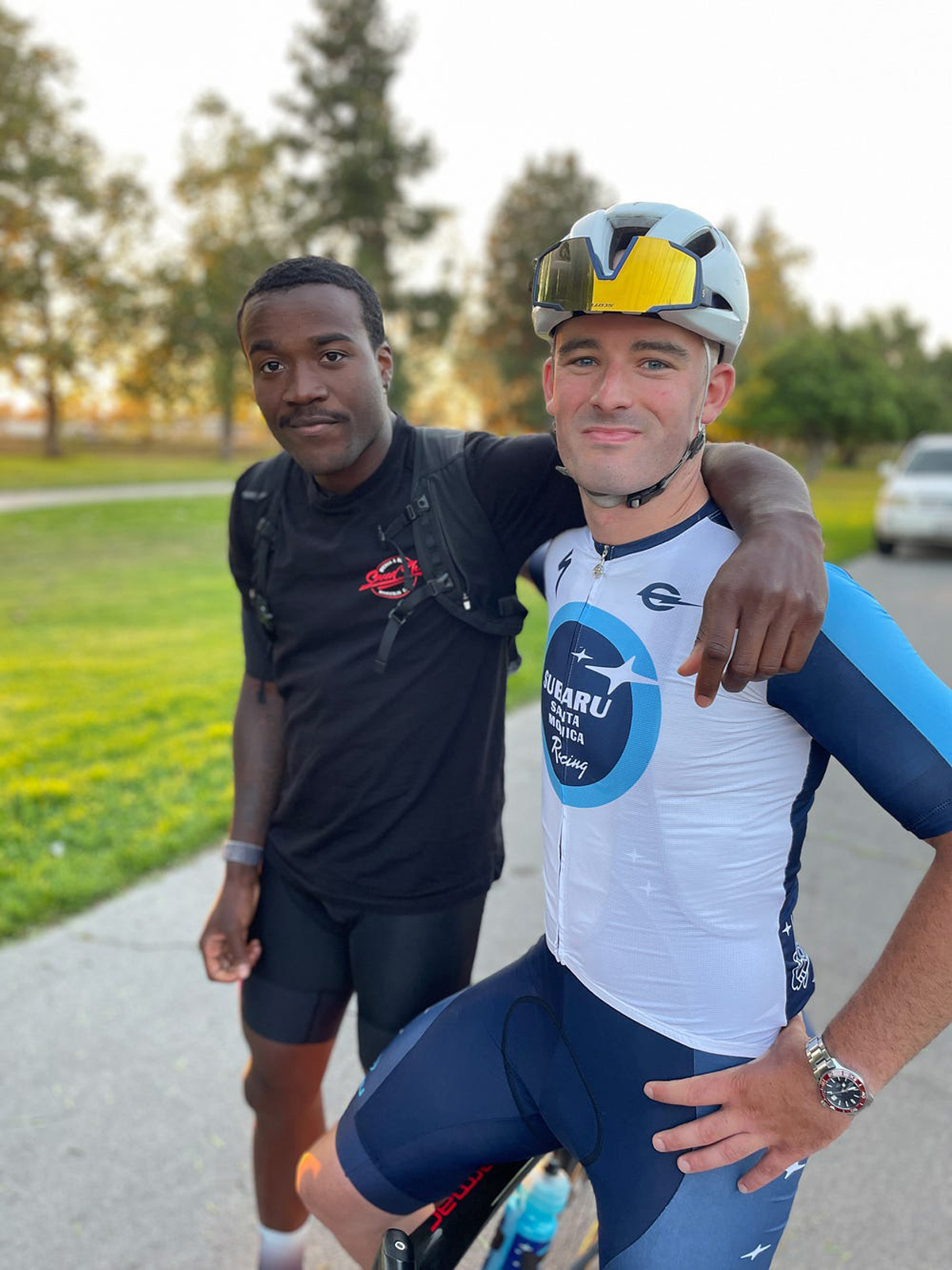By Peter Abraham — Over the past year, I’ve been visiting local criterium races around Los Angeles. Not just the kind that happen on Sundays, which have primes and pro fields and prize money, but also the weeknight variety. The kind of events you show up to every week for great workout that is not too dangerous and also very social. I go regularly to Camarillo criterium practice, and yesterday I visited, for the first time, the Eldo Race Series at El Dorado Park in Long Beach.

Some of these (like the Eldo Series) are actual races with a USA Cycling official, different classes and a podium ceremony. Others are more like an organized group ride that just does a certain number of laps around a deserted office park. These weeknight races exist in some form all over the world: at the Hillingdon Cycle Circuit in West London, at the Driveway Series in Austin, Texas, at the Sydney Cycle Club Crits in Australia and in many other places. They’re a critical component of the grassroots community of cycling. And as great as they are, these events could be so much better. Here’s why I love them and also how they can improve:

What I love:
They’re a great place to try out bike racing in a non-threatening environment. Let’s be honest, the learning curve for beginning bike racers is pretty steep, and getting dropped by the field in an official criterium can be humiliating. I know, because I’ve been there. Many criterium races can be dangerous, with tight corners and large but inexperienced fields. In contrast, the weeknight events are typically held on relatively safe courses with mentoring and a supportive atmosphere.

They’re inexpensive. This is key, particularly if cycling wants to attract new participants who are under 30 years old. One of the great things about weekly racing is the fact that it takes place every week. So at $25 or less per race, the habit won’t break the bank. The practice criterium I attend often in Camarillo is free; it’s more or less just a group ride with lap counter cards.

They’re fun. The vibe is generally social and community focused. This is really important — many of us would say, “If it’s not fun, why do it?” Cycling is, after all, recreation. And while my generation (I’m on the cusp of millennial and baby boomer) grew up looking for competition first and community second, that calculus has now been reversed: the social component is critical. That’s why activities like pickleball, gravel cycling and night run crews have boomed over the last few years; they’re all excuses to get together with other humans in real life.
Here’s how weekly races can expand their impact:
- More kids. While there are a few teenagers racing who have discovered bikes due to their parents, there needs to be more intentional outreach to get high school kids out to try cycling in a fun group environment. I don’t see any coordination between the events I go to and local NICA high school MTB teams that would allow some of those kids to try a different kind of racing. I wish bike brands brought demo fleets of inexpensive, aluminum road bikes to some of these events, so beginners could try out the sport.
- More women. Typically these events skew heavily male, maybe 80% or more. Most bike races look like a men’s club get together; they’re intimidating. So onramps must be built that allow women to get up to speed, learn about group riding and race together in their own groups. That means lots of hard work for race directors; achieving diversity is never easy. But the events would be much more fun and more inspiring with equal sized fields of women.
- More bike clubs. While I do see a few clubs well represented at the weekly events I attend, there are many, many more who are not present at all. Event directors need to spend at least some time reaching out to local cycling organizations, and the leaders of those groups need to, in turn, regularly remind membership about these events. I realize that weeknight criteriums are mostly run as a hobby by those with day jobs, but just a little more effort could grow participation a lot.







